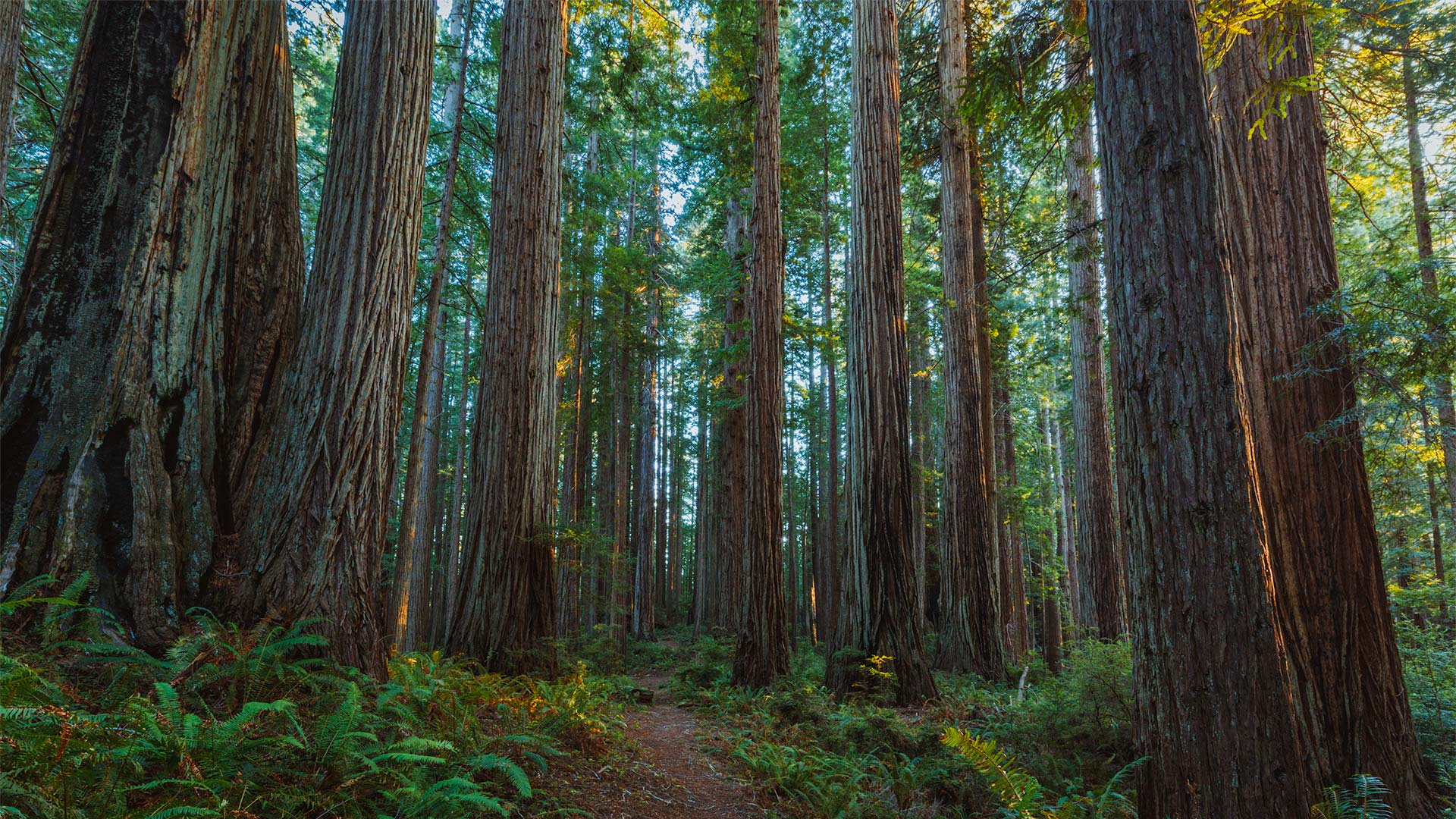By Max Wilbert / Images: public domain
Here is a familiar fact to many people across the United States and the world: the Redwoods of Northern California are the tallest trees in the world at nearly 400 feet.
This is both true and false. It’s true because right now the redwoods are the tallest trees. But it’s false because not long ago, that wasn’t the case.
The tallest known redwood is 379 feet tall. But historical accounts are full of references to Douglas Fir trees 400 feet tall and more. One tree in the lower North Fork of the Nooksack River Valley is thought to have been 465 feet tall, probably the largest known tree ever recorded anywhere on the planet. And it wasn’t alone.
 Micah Ewers of Portland writes, “If this was just a freak occurrence, I would write it off. But I’ve collected 90 to 100 reports of 300- to 400-foot Douglas firs. A hundred years ago, trees rivaling the height of the redwoods were fairly common. The whole Puget Sound was just filled with giant trees.”
Micah Ewers of Portland writes, “If this was just a freak occurrence, I would write it off. But I’ve collected 90 to 100 reports of 300- to 400-foot Douglas firs. A hundred years ago, trees rivaling the height of the redwoods were fairly common. The whole Puget Sound was just filled with giant trees.”
His research found references to many trees that would be considered world record holders today on the sites of current downtown Seattle and downtown Vancouver in British Columbia.
So if you find yourself among the skyscrapers of Seattle or Vancouver, or wandering through the neighborhoods and suburbs or young woodlands of the territory in between, take some time to reflect that where you are walking was not that long ago full of the largest trees on the planet, trees who were killed for profit, for greed, for colonization, for capitalism, for growth, for progress.
Followup:
Micah Ewers responded to this post with an extensive comment below. We’re copying the text here. Thanks Micah!
Thanks for the mention. Yeah the size of forest that was growing in Seattle was astounding. 250 – 300 foot trees were common back then. I am trying to follow up on an old report of a 412 footer said to have been logged around Tacoma, and another big tree 17.8 feet in diameter east of Seattle was reported in 1909 at over 400 feet, the tree was so big that the Puget Sound railroad had to be built around it. Another fir tree reported in Chehalis County in 1893 was measured with survey instruments at over 400 feet, and 17 feet diameter. There were even reports of 300 foot cedars, and 400 ft Sitka Spruce, 20 ft in diameter in Washington and Oregon 100 years ago.
If you look up “Ravenna Park” in a google image search you can find old post cards which give the size of some of the trees that used to grow in Seattle’s most treasured city Park,… Before they were all cut down for quick cash between the 1910’s – 1920’s… the excuse was that the trees were dying and needed to come down, which may have been true for one, but not the whole stand. Those fantastic trees were listed on the post cards as from 270 to about 400 feet in height and 10 to 12, even 14 feet in diameter. Age estimates were between 1,000 and 2,000 years for the oldest of them. Just imagine these massive old beasts jutting out of the little creek and valley near the University district.

<img loading="lazy" src="/wp-content/uploads/sites/18/2019/08/unnamed2.jpg"
alt="unnamed(2)"/> <figcaption>
unnamed(2)
</figcaption>
Same story in Vancouver, only at least Stanley Park was preserved and wind had blown down the last of the 325 footers in the park in 1926. Portland Also had some 300 – 330 footers in its vicinity, the last of them logged in the 1910’s – 20’s.
I think the redwoods and Douglas fir were actually tied for tallest tree, only that the tallest reported Redwoods I have discovered were up to 424 foot circa. 1886, while the highest reports for Douglas fir is 465. I actually heard a story from a guy in a Gardenweb forum who claimed his father had felled a 480 foot fir in the Black Hills, near Bordeaux, Washington around 1930– although, this is second hand, so it remains an unsubstantiated claim, but the 2008 study on theoretical limits of Douglas fir height by Oregon State University came up with a range of 99 – 145 meters as the possible limits for Doug fir (325 – 475 ft), whereas a 2004 study on Coast Redwoods yielded a slightly smaller limit of 400 – 430 ft.. So it may well be that Douglas fir was the supreme master of stature after all! Redwood holds the title for now, although it wouldn’t surprise me if a few hidden giant Douglas fir, over 350 feet high, still exist hidden in some valley awaiting discovery.
The last real big fir that has survived into modernity (which has been publicly reported anyways) was the “Mt. Pilchuck giant”, fir tree cut down on October 22, 1952 near the small town of Verlot, Washington. The big tree, 700 years old, was reported to be over 350 foot high, 11 ft 6 inches diameter and 30,000 board feet. From that point on, records are few for the big trees over that height range, except of course, the redwoods in California which have about 300 trees alive today of that height. (Impressive, considering 96% of old growth Coast Redwood has been clear-cut).
Editor’s Note: this piece was originally published in 2015, and is being republished here with a few minor edits.
